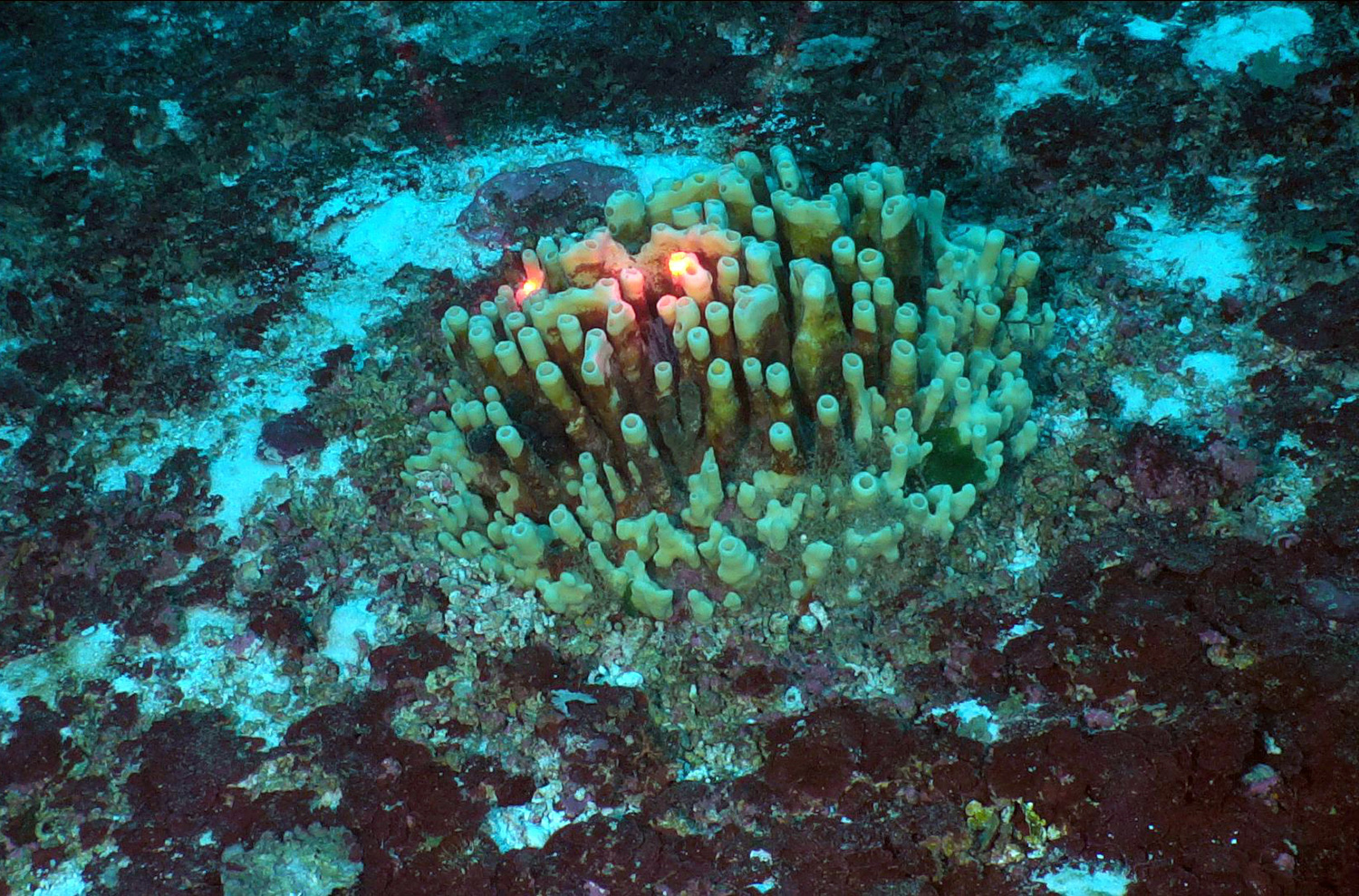Harbor Branch's CIOERT Explores Reefs on Research Cruise
FAU Harbor Branch scientists are once again involved in a research cruise investigating reefs off the southwest coast of Florida.

Oceanapia, a species of sponge, on Pulley Ridge
The Cooperative Institute for Ocean Exploration, Research and Technology (CIOERT) at FAU Harbor Branch was once again involved in a National Oceanic and Atmospheric Administration (NOAA) funded project aimed at investigating the role that healthy mesophotic reefs off the southwest coast of Florida play in replenishing ecosystems further downstream.
FAU Harbor Branch's Dr. Dennis Hanisak (Chief Scientist), John Reed, Stephanie Farrington and Brian Cousin recently returned from a 15-day cruise to Pulley Ridge in the Gulf of Mexico. This is the fourth and final one conducted each year since 2012, and part of a large collaborative project led by the University of Miami (UM) and involving more than 30 scientists at 10 different universities. The goal of this research is to investigate how the deep coral reefs of Pulley Ridge may replenish key coral and fish species and other organisms in the downstream reefs of the Florida Keys National Marine Sanctuary and Tortugas Ecological Preserve.
The Harbor Branch "Community Structure" team (Hanisak, Reed, Farrington and Heather Moe from the National Marine Fisheries Service) used UM's RV Walton Smith and the University of North Carolina at Wilmington's Mohawk ROV for surveys and characterization of the benthic communities. They also retrieved three physical oceanography moorings deployed in the initial 2012 cruise and released three satellite-tracked surface drifting buoys ("drifters") from the Walton Smith to help directly track the regional circulation patterns occurring during these surveys.
NOAA selected this cruise as one of its 2015 Signature Cruises, and it is sponsoring a page on NOAA's Ocean Exploration website with expedition information, including mission logs written by participants (click here to view it). Harbor Branch videographer Brian Cousin served as the web coordinator, documenting the cruise with video, still photography and writing.
The cruise's major finding was the discovery of coral populations at previously explored sites off of Pulley Ridge, building on what the scientists had observed on the 2014 cruise. The team found large areas of Agaricia, again dominated by small recruits. The scientists believe the extensive area of small Agaricia coral is evidence of a very significant recruitment event or series of events that happened during the last five years, following what is still an unexplained decline in corals prior to the recent work at Pulley Ridge.-FAU-
Tags: research | science | harbor branch